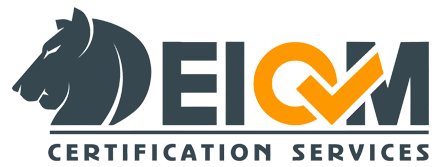ISO 27001 is an international standard that sets out the criteria for establishing, implementing, maintaining, and continually improving an information security management system (ISMS). It is designed to help organizations identify and manage security risks, protect sensitive information, and ensure the confidentiality, integrity, and availability of data. This standard provides a systematic approach to managing information security, aligning business objectives with security controls and best practices.
What is ISO 27001?
In today’s digital age, information security is of paramount importance for organizations across various industries. With the growing number of cyber threats and data breaches, it has become crucial for businesses to adopt robust security measures. One internationally recognized standard that provides a framework for managing information security is This standard. This article aims to provide a comprehensive guide to ISO 27001, outlining its significance, implementation process, and key requirements.
Benefits of ISO 27001
Implementing ISO 27001 offers numerous benefits for organizations. Here are some key advantages:
- Enhanced Security: This standard provides a robust framework for identifying and addressing security risks, thereby enhancing an organization’s overall security posture.
- Regulatory Compliance: ISO 27001 helps organizations meet legal, regulatory, and contractual requirements related to information security.
- Customer Trust: Demonstrating compliance with This standard can instill confidence in customers, reassuring them that their sensitive information is being protected.
- Competitive Advantage: ISO 27001 certification can give organizations a competitive edge, especially when dealing with clients who prioritize information security.
- Improved Processes: Implementing This standard promotes the adoption of systematic processes for managing information security, leading to improved efficiency and effectiveness.
The Process of Implementing ISO 27001
Implementing ISO 27001 involves several steps:
- Define the Scope: Determine the boundaries of the ISMS and identify the assets, processes, and functions to be included.
- Conduct a Risk Assessment: Identify and assess the risks associated with the organization’s information assets.
- Develop Policies and Procedures: Create policies and procedures that address the identified risks and establish controls to mitigate them.
- Assign Roles and Responsibilities: Define roles and responsibilities for managing and maintaining the ISMS.
- Provide Training and Awareness: Ensure employees are trained and aware of their responsibilities regarding information security.
- Implement Security Controls: Put in place the necessary security controls to protect information assets.
- Establish an Incident Management Process: Develop a process to identify, report, and respond to security incidents.
- Continual Improvement: Regularly monitor and review the effectiveness of the ISMS, making necessary improvements to enhance security.
Key Requirements of ISO 27001
ISO 27001 outlines several key requirements that organizations must fulfill to achieve certification:
- Management Commitment: Top management should demonstrate their commitment to information security and actively promote its importance.
- Risk Assessment and Treatment: Organizations must assess information security risks and implement controls to mitigate them.
- Documentation and Policies: Documented policies and procedures should be in place to address information security requirements.
- Roles and Responsibilities: Clearly define roles and responsibilities for managing information security.
- Training and Awareness: Employees should receive training and be aware of their responsibilities regarding information security.
- Implementing Security Controls: Organizations must establish and maintain the necessary security controls to protect information assets.
- Incident Management: An incident management process should be in place to handle security incidents effectively.
- Continual Improvement: Regularly monitor, review, and improve the effectiveness of the ISMS.
Risk Assessment and Treatment
One of the core components of ISO 27001 is risk assessment and treatment. Organizations need to identify potential risks, evaluate their impact, and determine appropriate measures to mitigate them.
This process involves:
- Risk Identification: Identify and document potential risks to the confidentiality, integrity, and availability of information.
- Risk Analysis: Assess the likelihood and impact of identified risks.
- Risk Evaluation: Determine the level of risk based on the likelihood and impact assessments.
- Risk Treatment: Develop and implement risk treatment plans to address identified risks.
- Risk Monitoring: Continuously monitor and review the effectiveness of risk treatment measures.
Documentation and Policies
ISO 27001 emphasizes the importance of documentation and policies for effective information security management. Organizations must develop and maintain a set of documents that outline the policies, procedures, and controls related to information security.
These documents may include:
- Information Security Policy: A high-level document that defines the organization’s approach to information security.
- Risk Assessment Reports: Documents that detail the results of risk assessments and treatment plans.
- Statement of Applicability: A document that identifies the controls selected and implemented by the organization.
- Procedures and Work Instructions: Step-by-step instructions for implementing security controls and managing information security processes.
- Records and Logs: Documents that provide evidence of the implementation and effectiveness of security controls.
Roles and Responsibilities
Assigning clear roles and responsibilities is crucial for effective information security management. Key roles may include:
- Information Security Manager: Responsible for overseeing the implementation and maintenance of the ISMS.
- Risk Manager: Manages the risk assessment and treatment process.
- System Administrator: Handles the technical aspects of implementing security controls.
- Employee Representatives: Act as liaisons between employees and management regarding information security matters.
Compliance and Certification
Achieving ISO 27001 certification involves undergoing an audit by an accredited certification body.
The certification process typically includes:
- Stage 1 Audit: A preliminary assessment to evaluate the organization’s readiness for the certification audit.
- Stage 2 Audit: A comprehensive assessment of the ISMS implementation and compliance with ISO 27001 requirements.
- Certification Decision: Based on the audit findings, the certification body decides whether to grant ISO 27001 certification.
- Surveillance Audits: Periodic audits to ensure the organization continues to meet the requirements of This standard.
- Recertification: The certification needs to be renewed periodically to demonstrate ongoing compliance with ISO 27001.
Conclusion
ISO 27001 is a globally recognized standard for managing information security. By implementing ISO 27001, organizations can enhance their security posture, gain customer trust, and improve operational efficiency. This article has provided a comprehensive guide to ISO 27001, covering its significance, implementation process, key requirements, and benefits. By adopting ISO 27001, organizations can proactively protect their information assets and mitigate the risks associated with today’s evolving threat landscape.
Contact EIQM
To contact us, please fill out the form below. We will contact you as soon as possible. You can also apply through this form if you would like to receive system certification or representation of EIQM Certification Body.

